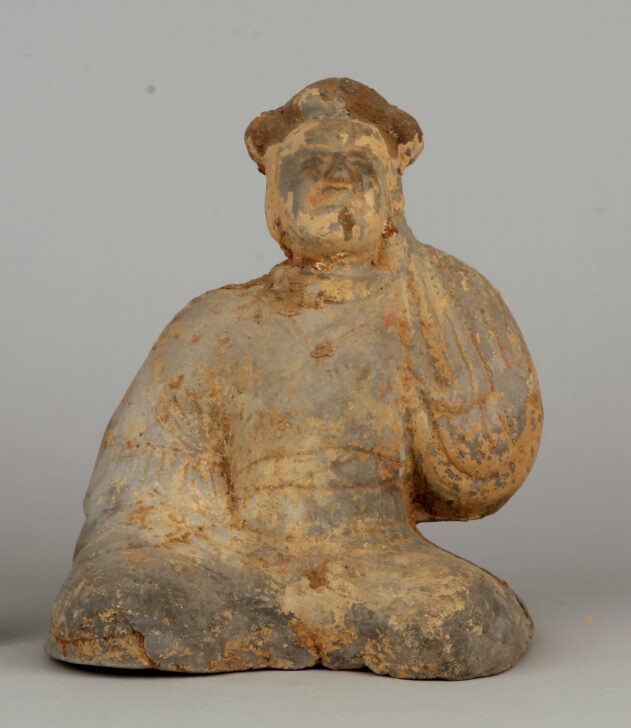Seated Figure
Chinese

Description
Subject Matter:
This is an earthenware figure of a seated official.
Since the Qin dynasty (221 - 206 BCE), ceramic figures have been used to replace human sacrifice in burial practices as mingqi as a way to provide for the deceased. Mingqi could include houses, towers, gates, granaries, livestock pens, chicken coops, wells, cooking stoves, storage vessels, dishes, incense burners, and lamps. Figures could include horses, dogs, anthropomorphic animals and people, such as officials, guardians, servants, and entertainers. By the Han dynasty, they also included representations of common people engaged in the activities that consumed their daily lives, such a cooking. The tombs in southern provinces of Sichuan and Shaanxi have revealed a vast array of figures in playful and humorous poses. As grave goods, these mingqi included everything one would need to ensure a comfortable transition into the afterlife. The number of ceramic mingqi items in a tomb could reach numbers of a few to several hundred objects.
Physical Description:
A grey earthenware figure of a man, seated with legs crossed, wearing a full belted robe with wide banded sleeves and a cap on his head. His right hand is on his lap while the left hand is held cupping his ear. It is covered in traces of slip and polychrome mineral paint.
Usage Rights:
If you are interested in using an image for a publication, please visit https://umma.umich.edu/request-image/ for more information and to fill out the online Image Rights and Reproductions Request Form.